Ads in video games are diverse and varied, just like games themselves. In fact, it is predicted that this market will hit US$109.60 bn by the end of 2024. As known, in-game advertising can increase purchasing intent by up to 12%.No wonder marketers and advertisers are massively tapping into this niche to quickly capitalize on growing opportunities.
So, how can ads be integrated into gameplay effectively? What types of advertising are there? Finally, what is the difference between video and mobile gaming landscapes?

What is in-game advertising?
In-game advertising is a form of monetization achieved by selling ad space within video games. Though the formats may vary, the primary goal remains the same: to capture the player's attention without disrupting the flow of gameplay.
What is ads in gaming? It’s like product placement in a movie, seamlessly blending into the environment so players engage with it naturally without breaking immersion.
Who is the target audience?
In-game advertising is a topic of interest among the majority of marketers and advertisers as this sector increasingly grows. According to a report from Statista, people spend the most time playing games in China: more than 12 hours a day on average. The global average ranges around 8 hours. That's as much as an adult needs to sleep.
More so, this market segment is projected to grow at an annual rate of 10.69% from 2023 to 2028, reaching a total value of €144.30 billion by 2028.
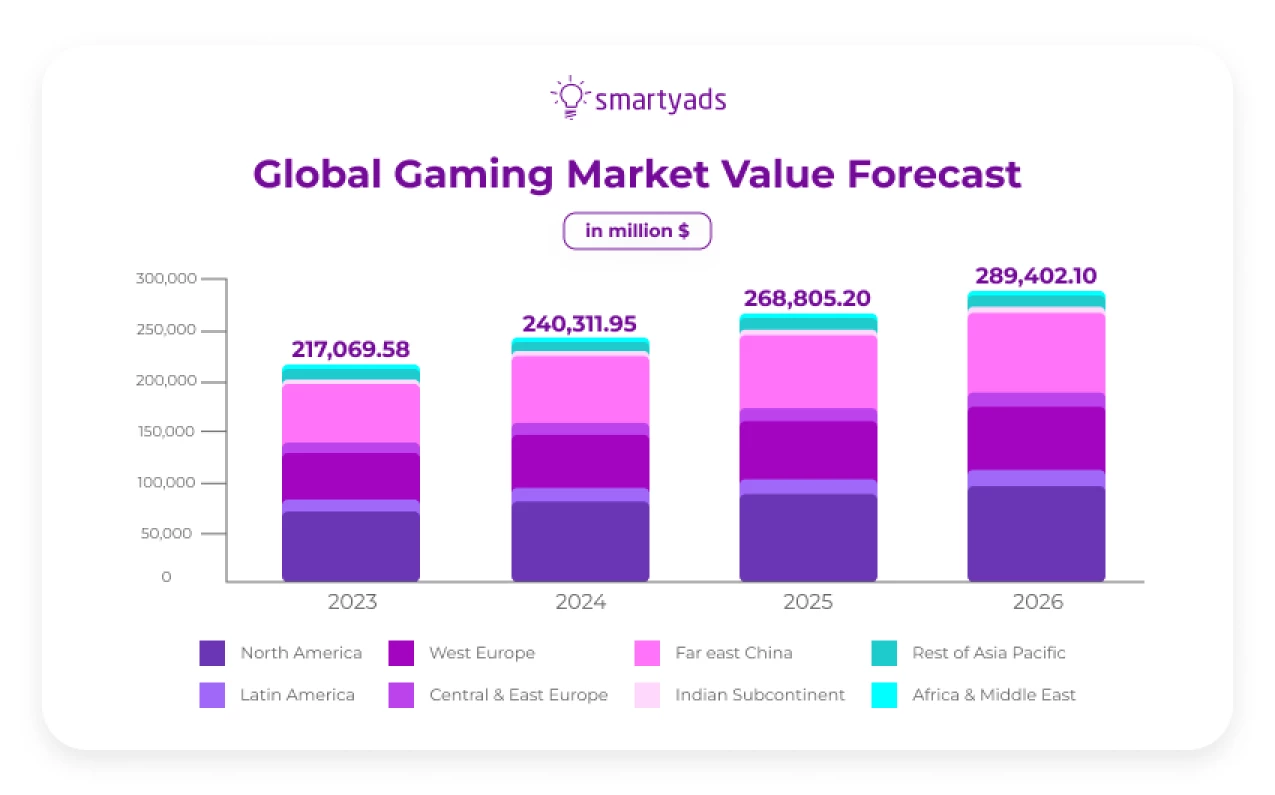
Ads for video games: Why you should invest in them?
Coverage
The in-game advertising space is a great and universal platform for digital advertising and it's not yet as mainstream as social media or search advertising, so you'll at least increase your reach and brand awareness.
Targeting
In addition, you can set up targeting for a wide variety of audiences. Stereotypically, gamers are seen as lonely and antisocial teenagers and men. First of all, those who were once teenagers have grown up and have children of their own (who most likely also play video games).
Second, the stereotype that those things are an exclusively "male" hobby has been debunked. Here, you can see that a significant portion of users who identify themselves as women have always played games. In 2022, already 48% of gamers in the U.S. are women.
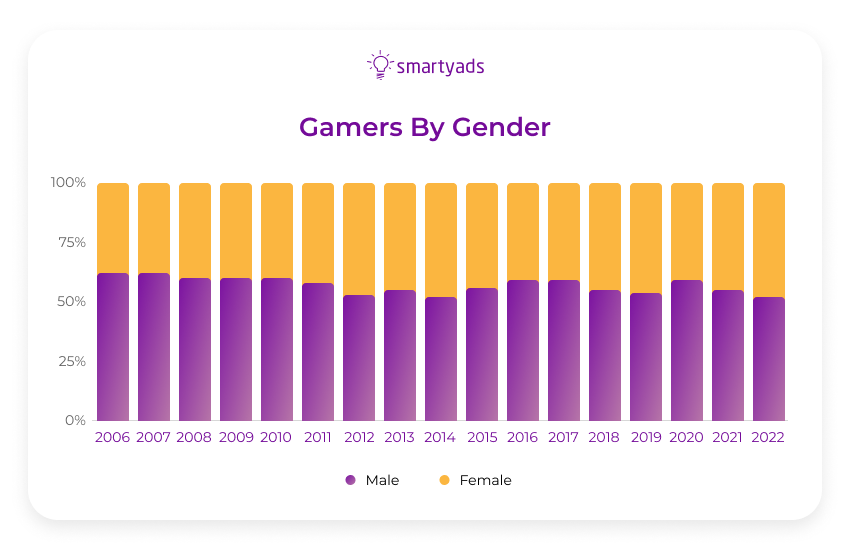
Multiplayer online games are gaining popularity, and many gamers prefer to play with their partners or friends. This opens up a huge opportunity for brands whose products are designed for this audience segment.
Optimizing
Just like any other programmatic advertising, programmatic gaming advertising allows you to optimize campaigns at any time. You can make changes to the ad campaign as soon as it launches. In addition, programmatic in-game ads offer great settings for personalizing content, enabling you to address each user individually through a mobile.
Rules and specifics of this market
Before tapping into advertising in the gaming industry, you need to understand the specifics and demographics of the gaming sector:
- Gamers: sociable, influential, and quick to act. Gamers are active and quick decision-makers, thriving in environments that require an inquisitive and agile mind. According to an Anzu study, 51% of gamers give advice, while 47% influence others. Almost half are early adopters, eager to explore new technologies and mobile games trends.
- The power of ads. In-game advertising provides a unique opportunity to reach this influential audience. Gamers, particularly those playing more than 10 hours a week, often have significant disposable income. However, it's essential to understand how they think and interact, as a generic approach won’t suffice.
- The importance of communities. Many marketers focus solely on in-game ads, overlooking the out-of-game community, where the same gamers can be targeted on more familiar platforms. Combining both in-game and out-of-game campaigns can yield better results.
- Different landscapes. Video game and mobile game environments are not equal. First, especially console-based, ads are often integrated in ways that fit the game's environment. For example, you might see in-game billboards or branded items that blend into the this world. In mobile apps, ads tend to be more direct and varied. They often appear as pop-ups, banners, or video ads that players can interact with or watch to earn rewards. Developers usually use these ads as a way to monetize free-to-play games. Mobile campaigns are much easier to implement and run thanks to programmatic technologies, aka demand-side platforms.

Benefits of advertising in video games
In-game advertising not only generates revenue for developers and enables in-app purchases but also enhances the user experience around-the-game and advertising ecosystem. How? Let’s review this below:
Higher engagement and retention
By offering rewards for watching advertising videos (like rewarded ones), app developers foster loyalty to their games as users receive value in exchange for their efforts (coins, transition to new levels, and more). Providing access to relevant content is another great option that developers can offer to gamers in exchange for completing the video ads.
Brand-safe environment
In mobile games, ads protect brands from negative mentions and reviews. Brand owners can be assured that their ads appear in appropriate gaming environments.
More space for attribution
Since these ads depend on user interaction, advertisers can accurately track key metrics like engagement, reach, and ad completion rates.
PC or mobile?
Many popular PC gaming options are optimized for mobile versions. Sometimes, this can affect the usability of the gameplay, but it doesn't deter fans who want to have the gameplay with them everywhere.
A huge percentage of players mostly use smartphones to access their favorite content. To be precise, around 70% of gamers in the United States use a smartphone to access video games. The second and third most popular were PCs and gaming consoles, correspondingly.
Therefore, one of the most universal and profitable options will be in-game advertising on mobile devices. You can learn more about trends and the most popular games of 2022-2030 here.
Types of in-game advertising
Static in-game advertising
Similar to product placement in a movie or music video, static ads often appear on in-game billboards or signs. Still, there is an option to serve static ads as banners across different apps, which becomes possible thanks to programmatic platforms. The cost of advertising in video games with banners is more affordable than with other dynamic formats that require interaction.
Dynamic in-game advertising
Dynamic in-game ads are displayed within the gameplay – rewarded ads, playable and more. Dynamic in-game advertisements give advertisers greater flexibility and easy scalability. They can also be used to geo-target users who have subscribed to the newsletter.
Most common formats:
Video ads
The video ad format is one of the most successful in any media, but in the gaming space, it takes a very special place. A simple video ad can effectively showcase other games that are getting promoted (while featuring other mini versions of gameplay).
In-game video
These are gaming ads that the user sees before loading the game or between levels. Usually, some of these ads can be skipped, but some of them must be viewed. Such ads have an excellent view rate, but not a very high conversion rate. They are suitable for brand awareness campaigns.
Video with a reward
In this format, the player often has the choice to watch the promotional video or not. If they choose to watch, they can receive rewards in the form of in-game resources.
These ads for video games are very popular among developers since they don't distract the users from the gameplay; instead, they increase their involvement and improve the overall gaming experience.
According to statistics from ironSource, reward videos motivate players 6 times more often to make in-app purchases. Another 76% of mobile gamers in the U.S. prefer video ads with rewards over banner ads.
Playable video
Playable ads are free-to-play games usually presented as teaser videos that demonstrate the features and gameplay of a game app. This preview allows the user to understand whether they need to download a particular app, and due to its interactivity, the ads are not annoying and increase the user's engagement level.
This approach helps to reduce the ratio of app deletions to installs and increase retention.
Like regular native ads, in-game native ads are tailored to the interface and embedded in the game structure itself. They are unobtrusive enough to avoid annoying players, yet they are quite efficient as they essentially serve the functions of banner advertising, but more effectively.
Coverage and time of display are essential indicators for such advertising.
Audio ads
A lot of users prefer to listen to their favorite playlists or podcasts instead of in-game music while they play.
Many gaming consoles now have the Spotify music streaming app pre-installed. So, if you set up gaming ads on the console, but through Spotify, that's just the kind of out-of-game ads you get.
This is a very familiar advertising format for all marketers, and, of course, it is also present in the mobile gaming industry.
Block banners
These are small rectangular banners that are placed at the bottom or top of the screen. Unlike dynamic in-game ads, these gaming ad units usually do not interact with the gameplay, and the background remains unchanged during the game. When choosing this type of advertising, it is essential to pay attention to the timing of the display of the banner, as the user needs time to be distracted from the game and pay attention to the advertising.
Cross-page banners
These are banners that unfold to cover the whole screen during different transitional moments of the game, such as when reaching a new level or changing location.
Such banners are pop-up ads and can be closed (sometimes only after a certain time). They are also an effective option for in-game advertising because the user will see your gaming ads regardless.
Examples of the best ads in video games
If you want to get yourself inspired, here are a couple of memorable and exceptionally well-made in-game advertising examples that you can use in your own practices.
Halo 3: Believe" Campaign
This campaign in a video game for Halo 3 featured a series of emotionally powerful and cinematic commercials that painted a dramatic picture of the epic story. The ads used high-quality CGI and live-action footage to capture the essence of the game's universe.
Fortnite" x "Travis Scott" Concert
In Fortnite, the in-game event featuring Travis Scott's virtual concert was a huge promotional event. It wasn’t just about promoting a music artist but also about integrating the experience, attracting both gamers and music fans.
PUBG" x "The Walking Dead" Crossover
PUBG featured in-game collaborations with The Walking Dead. Players could purchase themed skins and items based on the show’s characters and gear, which was a significant promotional effort.
GTA Online" x "Elitás Travel
Grand Theft Auto Online includes a fictional travel agency called Elitás Travel, which promotes in-game luxury aircraft and properties. This in-game advertisement is a clever nod to real-world high-end travel and luxury lifestyle brands.
How to launch in-game ads
To launch in-game advertising, you can contact the developers directly and place ads in the game's interface during the development stage, as Barack Obama did, for example, to promote his election campaign in 2008 and 2013.
You can also engage in advergaming, which means sponsoring a game that will consist entirely of symbols or products related to your brand. This is a very interesting but extremely expensive strategy.
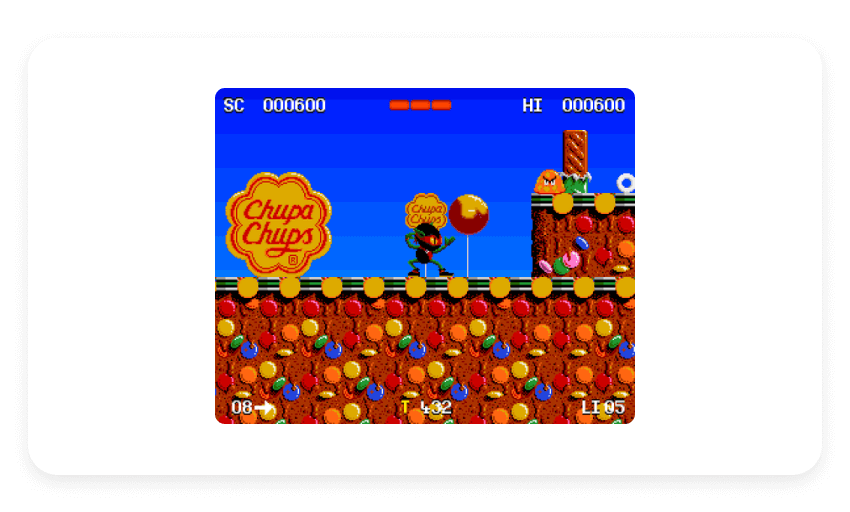
However, the easiest and fastest way to run in-game advertising would be to turn to the Demand Side Platform (DSP). This is a programmatic advertising platform that allows advertisers to place their ads and set up the desired target audience and channels, and the system itself selects suitable publishers and the time of display ads that match the time of activity of an advertiser's interested user.
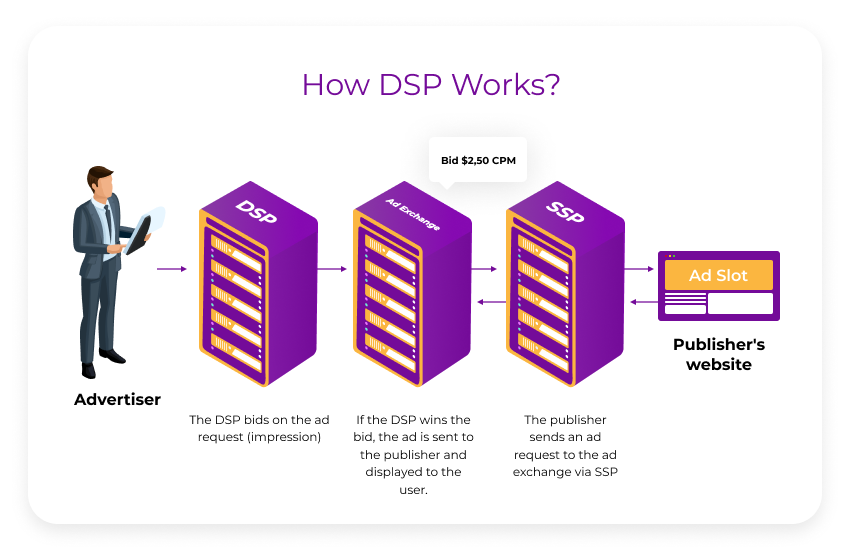
Bottom Line
Advertising in gaming industry is booming, it allows you to reach a wide variety of users and takes many different forms and formats. On programmatic platforms, handling in-game ads has become remarkably efficient and user-friendly. From the initial setup of your advertising campaigns to ongoing optimization, the process is designed to be as seamless as possible.
This means you can easily configure your campaigns to target the right audience, adjust your strategies, and refine your approach for the best results – no need to meddle with difficult implementation. If you're looking to take advantage of this streamlined approach to in-game advertising, we invite you to register with SmartyAds DSP. Our platform offers robust tools and support to help you maximize the effectiveness of your ad campaigns and achieve your marketing goals with ease.
Launch an in-app or in-game campaign on SmartyAds DSP!

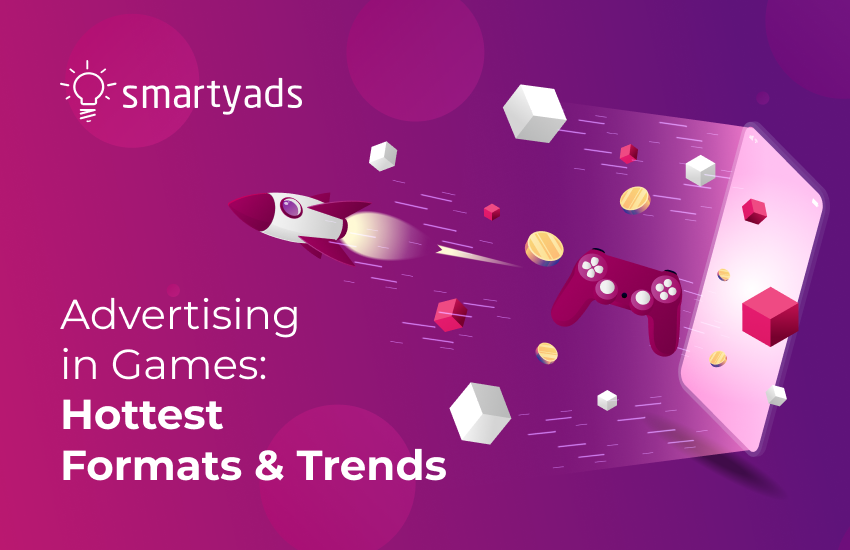
.webp)


